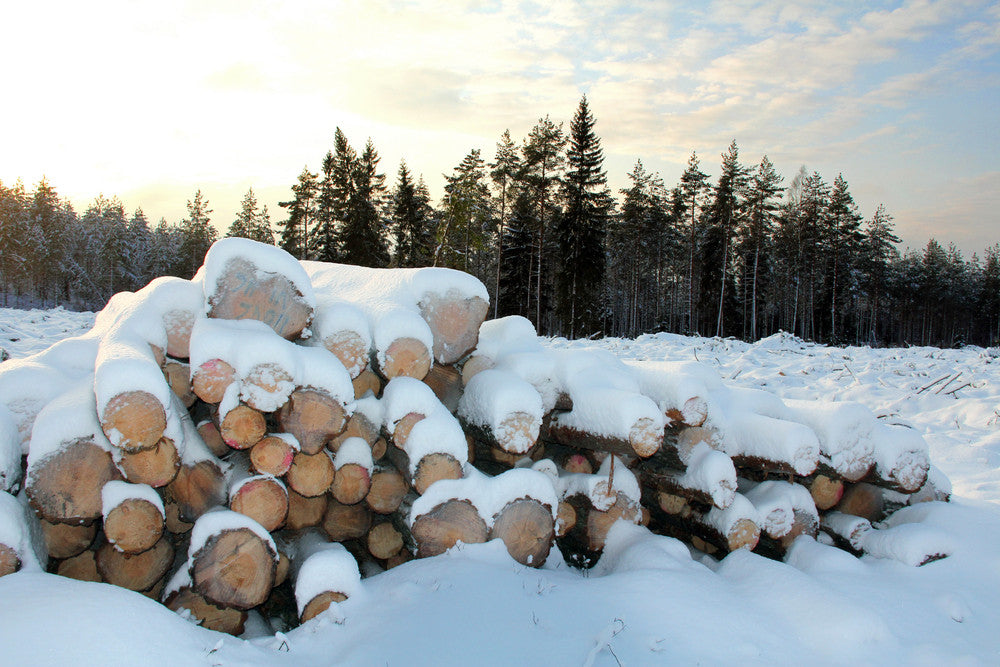How to Keep Your Firewood Dry in the Winter

If you’re enjoying life in a mountain cabin in climate with cold, snowy winters, there’s nothing like a roaring fire on a frigid night. Whether you depend on a fireplace and a wood-burning stove for heat and cooking, or it’s just an aesthetic concern, you’ll need clean, dry firewood to burn. The problem is that firewood can easily get wet, making it difficult to burn and susceptible to decay. Here are some tips on how to keep firewood dry in the winter so that you can enjoy a season-long supply.
Choose the Right Location
Firewood is generally stored outdoors or in a woodshed, but the wrong location can leave it susceptible to moisture from snow melt. If it gets wet, it can start to rot. It also attracts termites, which can be a problem if it’s stored too close to your cabin. For best results, you should store your firewood at least 30 feet away from your home, in a place that gets ample sunlight. It’s also wise to store it so that it’s elevated off the ground. A firewood rack is a good investment for this. They’re available in a variety of sizes to accommodate the quantity of firewood that you need at any given time.
Dry and Season Your Firewood
If you buy firewood at the store, it’s already gone through a drying and seasoning process. But if you’re harvesting your own firewood the old-fashioned way, you’ll need to do this yourself. This can take up to six months, so start early. The wood needs to sit in a sunny area where it’s within your reach, gaining exposure to the elements. It’s ready when it turns yellow, gray, or dark brown, and it has small cracks at the edges. You can cover it with a tarp to protect it from rain, while still allowing it to get enough sunlight.
Stack Your Firewood
The way that you stack your firewood is also important for keeping it dry. The bark can hold moisture, so in rainy regions, you should stack it so that the bark is facing the ground. If you’re expecting snow to cover the ground, store it with the bark facing upward instead. It should be stacked on a level surface, far enough from any nearby wall for air to circulate all the way around it. It will shift as it dries, so it’s unwise to stack firewood more than four feet high.
Cover Your Firewood
Covering the wood will also keep it safe from rain, ice, and snow during the winter. You can use a tarp for this, so that you can remove it on sunny days to let the wood continue to season and dry out. Firewood rack covers are available that fit right over the rack for protection. You could also invest in an open storage shed that lets wind blow all the way through it.
Keep Pests Away
Insects love to make their homes in stacks of firewood, and some of them can eat through the wood and damage it. Insects, in turn, attract predators that eat them, like snakes and spiders. Because insects (especially termites) are more attracted to older, dryer wood, you should use the oldest firewood first. To deter insects, you can also sprinkle diatomaceous earth around it. This substance, made from the fossil shells of ancient microorganisms, kills insects through desiccation. It’s nontoxic and safe for humans and pets.
How to Keep Your Firewood Dry: Ample Sun and Minimal Moisture
The key to keeping firewood dry is to protect it from rain and snow, but still allow enough sunlight to dry and season it. By storing it correctly, you can make sure that it stays dry and useable throughout the winter.




